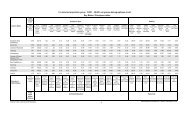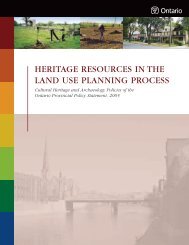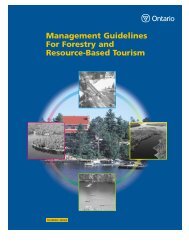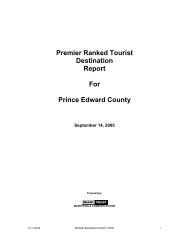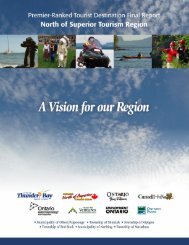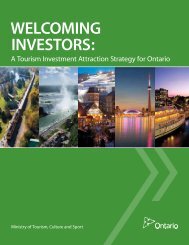Factors Influencing Visitor's Choices of Urban Destinations in North ...
Factors Influencing Visitor's Choices of Urban Destinations in North ...
Factors Influencing Visitor's Choices of Urban Destinations in North ...
Create successful ePaper yourself
Turn your PDF publications into a flip-book with our unique Google optimized e-Paper software.
Also, the model seems to completely neglect the demand side <strong>of</strong> competitivenessdest<strong>in</strong>ation. The model discussed below addresses this shortcom<strong>in</strong>g.The Crouch-Ritchie model does not have a separate category for shopp<strong>in</strong>g, and fails torecognize shopp<strong>in</strong>g as a major attraction that substantially <strong>in</strong>fluences visitor flows to adest<strong>in</strong>ation.“Dest<strong>in</strong>ation Competitiveness: Development <strong>of</strong> a Model with Application toAustralia and the Republic <strong>of</strong> South Korea”Dwyer and Kim (2001) evaluate Australia and Korea <strong>in</strong> terms <strong>of</strong> dest<strong>in</strong>ationcompetitiveness is based on the model developed by Ritchie and Crouch (1999 and 2000)with some modifications. This approach allows a direct comparison <strong>of</strong> the two countieswith each other and facilitates an understand<strong>in</strong>g <strong>of</strong> the set <strong>of</strong> factors that <strong>in</strong>fluence touriststo visit these countries.The model <strong>in</strong>cludes the follow<strong>in</strong>g eight categories:1. Inherited (Endowed) Resources <strong>in</strong>clude Natural Resources (i.e. comfortable climatefor tourists, cleanl<strong>in</strong>ess/sanitation <strong>of</strong> a place, natural wonders, national parks, floraand fauna) and Culture and Heritage (i.e. variety <strong>of</strong> cuis<strong>in</strong>e, history, customs,architectural features, and artwork).2. Created Resources <strong>in</strong>corporates Tourism <strong>in</strong>frastructure (i.e. accommodation facilities,food, fast food outlets, travel agents), Special Events, Range <strong>of</strong> Available Activities(i.e. mix <strong>of</strong> activities with<strong>in</strong> a dest<strong>in</strong>ation), Enterta<strong>in</strong>ment (i.e. theatre and filmfestival) and Shopp<strong>in</strong>g 25 (i.e. opportunity to shop for duty free items, opportunity toshop at an exotic location). Shopp<strong>in</strong>g is particularly important for Asian tourists.3. Support<strong>in</strong>g <strong>Factors</strong> and Resources provide a foundation for successful tourism.These factors are general <strong>in</strong>frastructure (i.e. road network, airports, tra<strong>in</strong> system,sanitation, health care facilities), quality <strong>of</strong> service, accessibility <strong>of</strong> dest<strong>in</strong>ation,hospitality towards tourists, market ties (i.e. tourism to Monaco is dependent ontourism numbers to French and Italian Riviera).4. Dest<strong>in</strong>ation Management is related to factors that enhance the appeal <strong>of</strong> the coreresources and attractors. The paper primarily relies on the def<strong>in</strong>ition and perspectiveprovided by Ritchie and Crouch (1999). “A dest<strong>in</strong>ation that has a tourism vision,shares this vision among all stakeholders, understands both its strengths and itsweaknesses, develops an appropriate market<strong>in</strong>g strategy and implements itsuccessfully may be more competitive than one which has never exam<strong>in</strong>ed the rolethat tourism is expected to play <strong>in</strong> its economic and social development 26 ”. The paperstresses five different types <strong>of</strong> dest<strong>in</strong>ation management: dest<strong>in</strong>ation market<strong>in</strong>gmanagement; dest<strong>in</strong>ation policy; plann<strong>in</strong>g and development; dest<strong>in</strong>ation managementorganization; human resource development; and environmental management.5. Situational Conditions represent matters that moderate, mitigate, or modify thedest<strong>in</strong>ation competitiveness by filter<strong>in</strong>g the impact <strong>of</strong> other groups <strong>of</strong> factors. Theseconditions <strong>in</strong>clude dest<strong>in</strong>ation location (i.e. proximity to other dest<strong>in</strong>ations, travel25 Accord<strong>in</strong>g to S<strong>in</strong>gapore Tourism Board 2000, over 50% <strong>of</strong> visitor expenditures <strong>in</strong> S<strong>in</strong>gapore is onshopp<strong>in</strong>g items.26 Dwyer and Kim (2001).47


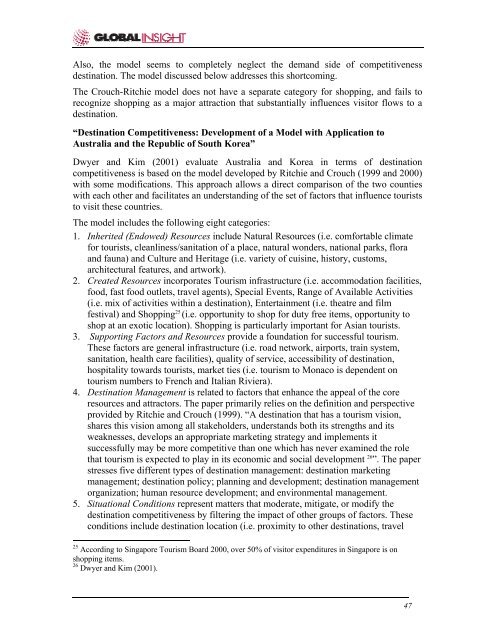
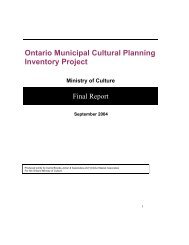
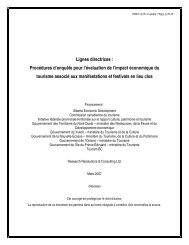
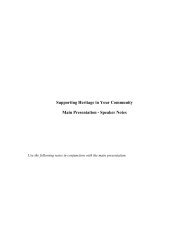
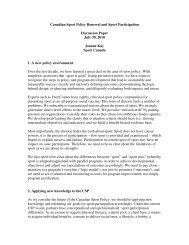
![THIS AGREEMENT made this [date], between [name of owner] (the ...](https://img.yumpu.com/49827605/1/158x260/this-agreement-made-this-date-between-name-of-owner-the-.jpg?quality=85)

